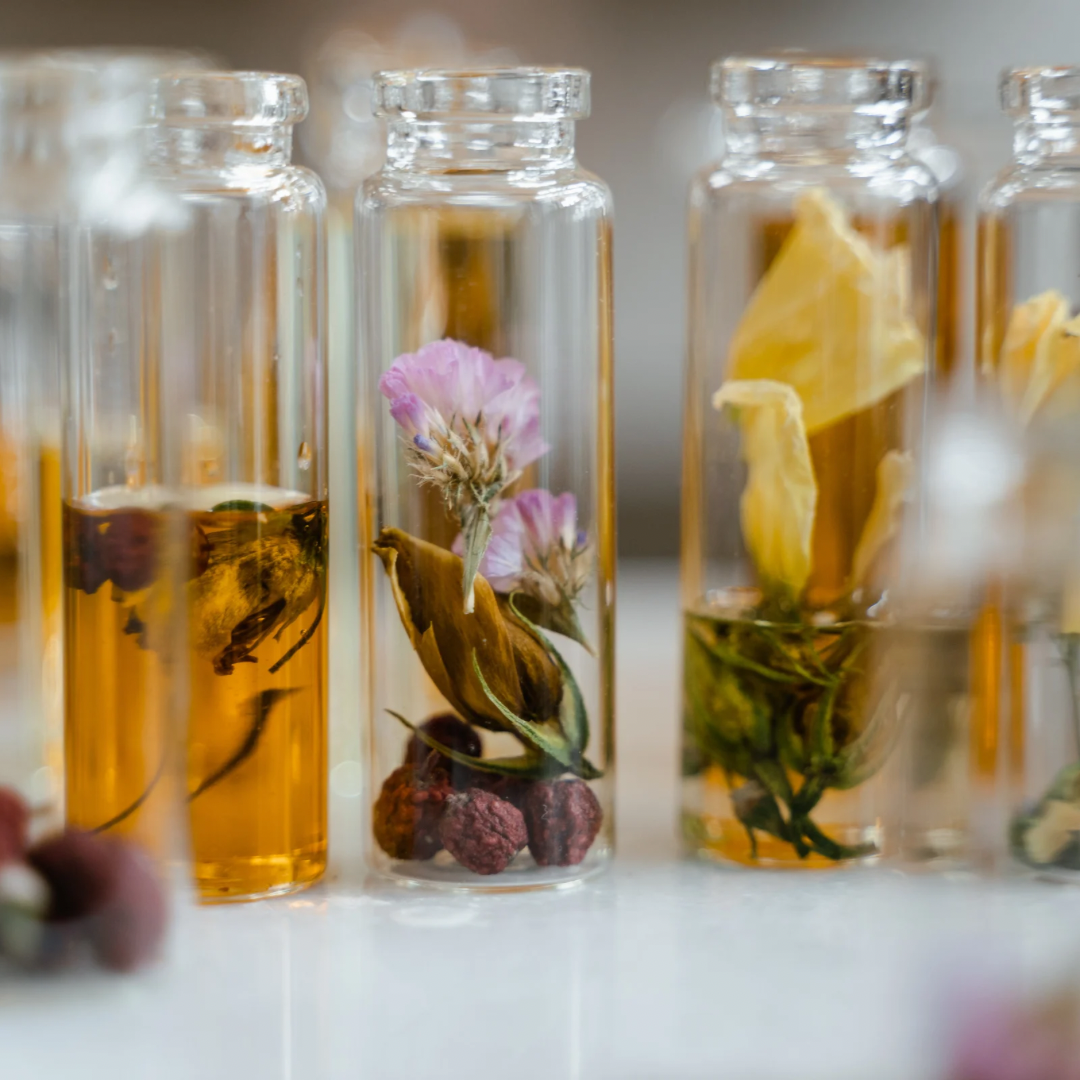

· By GRETA FITZ
The Truth About Synthetics in Clean Perfume: What No One’s Telling You
Why Vegan, Non Toxic, and Hypoallergenic Fragrances Still Need Synthetics — And Why That’s a Good Thing
“Oh, your brand is clean and non toxic, but you still use synthetics?”
I get asked this all the time. And honestly, it’s the question that reveals the biggest misunderstanding in clean fragrance today.
The answer? If you do your research, you’ll see that even the biggest natural, hypoallergenic, clean brands that built their identity on the fear of synthetics still rely on them. Especially if they claim to be vegan or hypoallergenic.
Here’s the science:
Hypoallergenic means no allergens.
But every natural ingredient contains allergens. That’s the truth.
Think about it.
Essential oils like bergamot, rose, jasmine, sage, palo santo, and lavender are beautiful. But they’re also some of the most common allergens in fragrance.
So when a brand claims to be both hypoallergenic and all natural, it usually means they’re either leaving something out or using safe synthetics behind the scenes.
Why Good Synthetics Matter in Clean Fragrance
We’re not anti natural. We’re pro truth, pro safety, and pro intentional formulation.
Here’s why we intentionally choose certain synthetics at Ascention:
1. We protect endangered botanicals
Palo Santo and White Sage are two examples. These sacred plants are often wild harvested in unsustainable ways, threatening indigenous ecosystems.
Indian Sandalwood, Oud, Rosewood, Orris, and even Spikenard are also at risk due to overharvesting.
We honor the energy of these plants while choosing alternatives that do not harm the Earth.
References:
State Industrial on IFRA updates
Natural Niche Perfume: Rare Ingredients
2. We replace animal derived fragrance materials
Historically, perfume used ingredients like ambergris from whales, musk from deer glands, civet from wild cats, and castoreum from beavers.
None of these align with our values.
Today, these notes can be reimagined through beautiful, cruelty free molecules that mimic the depth and sensuality of the originals without harm.
3. We create new olfactive experiences
Some scents don’t exist in nature. Think of warm skin, clean laundry, rain on pavement, salty ocean breeze, or milky musk. These are created by visionary perfumers using safe molecules to evoke a feeling, memory, or emotion. They’re not artificial. They’re artistry.
4. We protect sensitive skin
Natural doesn’t always mean safe.
Would you ever rub poison ivy on your skin?
But it’s natural!
You see my point?
Just because something comes from nature doesn’t mean it’s gentle, clean, or good for your body. Poison ivy is natural. So is oak moss, mugwort, and even some essential oils like cinnamon or clove. All can cause irritation or allergic reactions.
Palo Santo and White Sage, while spiritually revered, can also be sensitizing when used directly on skin in fragrance form.
On the other hand, safe synthetics are often the more skin-friendly option. They’re stable, consistent, and carefully designed to reduce reactivity. If you have allergies or sensitivities, lab-created molecules can actually make fragrance more inclusive and enjoyable.
This is why we always choose safety over trends. We formulate with your skin, your senses, and your sacred space in mind.
5. We ensure consistency and performance
Naturals vary with harvests. Crops can change based on season, soil, and location.
Synthetics give us stability. They make sure your favorite scent smells the same each time. They also help with longevity, sillage, and drydown performance.
Natural Doesn’t Mean Safe. Synthetic Doesn’t Mean Bad.
This needs to be said clearly.
There is nothing inherently safer about natural ingredients. And there is nothing inherently toxic about synthetics.
What matters is intention, sourcing, and formulation.
The perfume industry is highly regulated. And yes, we follow those standards.
What is IFRA and Why It Matters
The International Fragrance Association, or IFRA, creates global safety standards for fragrance ingredients. They set usage limits, ban harmful compounds, and regularly review new scientific data.
- In 2023, IFRA released its 51st Amendment, with full adoption by October 2025.
- This amendment tightened safety regulations for both natural and synthetic materials.
- They also released a Transparency List of more than 3,600 ingredients used worldwide.
References:
IFRA Ingredient Transparency Report
Ascention goes beyond IFRA. We never use phthalates, parabens, toluene, or formaldehyde releasing agents. Every ingredient is vetted not just for safety but for vibration. We care about how it smells, how it feels, and how it supports your energy.
We Stand for Truth, Transparency, and Sacred Scent
You deserve to know what’s in your perfume. And you deserve to feel empowered by that knowledge.
We’re not here to greenwash or fearmonger. We’re here to help you understand how clean fragrance really works.
At Ascention:
- We use both natural and synthetic ingredients with purpose.
- We never use animal derived materials or endangered botanicals.
- We follow the highest global safety standards.
- We formulate with your skin, spirit, and soul in mind.
I hope this helps!
xo
Greta Fitz
Founder And CEO
